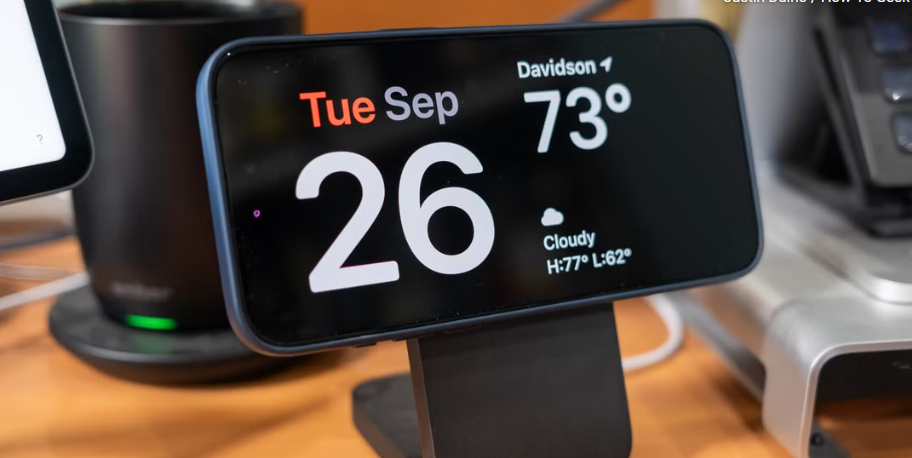Managing health records can be a daunting task, especially when dealing with multiple healthcare providers and facilities. Apple Health simplifies this process by allowing you to automatically download and organize your health records directly on your iPhone. This feature makes it easier to access and share your health information whenever you need it. In this comprehensive guide, we will walk you through the process of setting up, managing, and using the automatic health records feature in Apple Health.
What Is Apple Health?
Apple Health is a built-in app available on iPhones and other Apple devices that aggregates health data from various sources. It provides a comprehensive view of your health metrics, including fitness, sleep, nutrition, and medical records. By integrating with healthcare providers, the app can also securely store and display your medical history, test results, immunizations, and other vital health information.
Benefits of Using Apple Health
- Centralized Data Management: All your health data in one place.
- Secure Access: Data is encrypted and protected by your device’s passcode or biometric authentication.
- Easy Sharing: Share records with doctors and family members securely.
- Seamless Integration: Syncs with third-party apps and devices for a more holistic view of your health.
Prerequisites for Downloading Health Records
Before you begin, ensure that the following prerequisites are met:
- Compatible Device: You need an iPhone running iOS 11.3 or later.
- Apple ID: Make sure you’re signed in to your Apple ID.
- Healthcare Provider Participation: Your healthcare provider must support Apple Health record integration.
- Internet Connection: A stable Wi-Fi or cellular connection is required for downloading records.
How to Automatically Download Health Records to Apple Health
Step 1: Open the Apple Health App
- Launch the Apple Health app on your iPhone.
- Tap the Summary tab at the bottom of the screen.
Step 2: Set Up Health Records
- In the Summary tab, tap Get Started under Health Records or navigate to Browse > Health Records.
- Tap Add Account.
Step 3: Search for Your Healthcare Provider
- Use the search bar to locate your healthcare provider or hospital.
- Select your provider from the list of supported facilities.
Step 4: Log In to Your Provider’s Portal
- Enter your credentials for the healthcare provider’s patient portal.
- Grant the necessary permissions to allow Apple Health to access your health records.
Step 5: Enable Automatic Updates
- Once connected, toggle the option for Automatic Updates if it’s not enabled by default.
- Confirm your selection.
Step 6: Verify Your Records
- Go back to the Health Records section.
- Check that your data, such as lab results, immunizations, and medications, has been imported.
Managing Your Health Records in Apple Health
Viewing Your Records
- Open the Health Records section in the app.
- Select a category (e.g., Allergies, Lab Results, Procedures) to view detailed information.
Organizing Your Data
- Use the Browse tab to find specific health metrics.
- Customize your Favorites for quick access to frequently viewed records.
Sharing Health Records
- Tap on Sharing in the Health app.
- Select Share with Doctor or Share with Family.
- Choose the data you wish to share and confirm.
Security and Privacy Features
Apple takes privacy seriously. Here’s how your data is protected:
- End-to-End Encryption: Only you and authorized parties can access your health records.
- Local Storage: Data is stored locally on your device and is not uploaded to iCloud unless explicitly allowed.
- Permission Management: You control which apps and people can access your health data.
Tips for Enhancing Security
- Use a strong passcode or enable Face ID/Touch ID.
- Regularly review app permissions under Settings > Privacy > Health.
- Avoid sharing sensitive data over insecure networks.
Troubleshooting Common Issues
Problem 1: Unable to Find Your Healthcare Provider
- Check if your provider supports Apple Health integration.
- Visit the provider’s website or contact their support team for confirmation.
Problem 2: Records Are Not Updating Automatically
- Ensure that Automatic Updates are enabled.
- Check your internet connection.
- Log out and back into your provider’s portal within the Health app.
Problem 3: Data Discrepancies
- Verify data directly with your healthcare provider.
- Report errors through the provider’s patient portal.
Integrating Third-Party Apps and Devices
Apple Health supports integration with various third-party apps and devices, such as fitness trackers and smart scales. Here’s how to connect them:
- Open the third-party app and look for Apple Health integration settings.
- Grant the required permissions to sync data.
- Check the Health app to ensure data appears under the relevant categories.
Frequently Asked Questions
Can I Access My Health Records on Other Apple Devices?
Yes, you can access health records on other Apple devices, such as an iPad or Apple Watch, provided you’re signed in to the same Apple ID and have enabled health data sharing.
Is There a Cost for Using Apple Health?
No, Apple Health is a free feature available on all compatible Apple devices.
How Often Are Records Updated?
Updates depend on your healthcare provider’s system. Most providers update records in real-time or within a few hours.
Conclusion
Downloading and managing your health records in Apple Health is a powerful way to stay informed and take control of your healthcare. With a few simple steps, you can automatically download your health records and access them securely from your iPhone. By leveraging the app’s features, you can ensure that your medical information is always at your fingertips, ready for appointments, emergencies, or personal tracking. Start today and experience the convenience and peace of mind that Apple Health offers.



